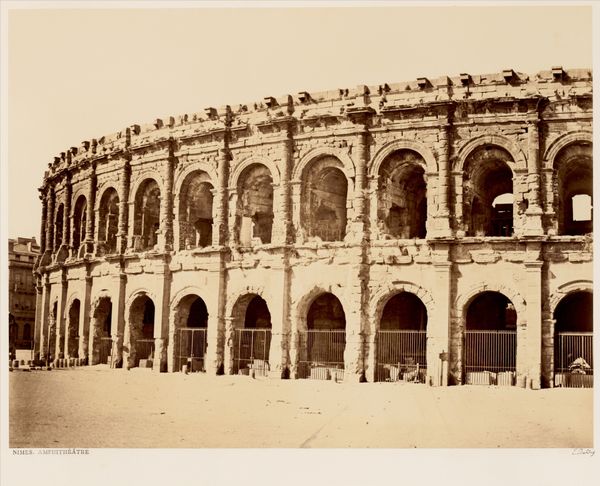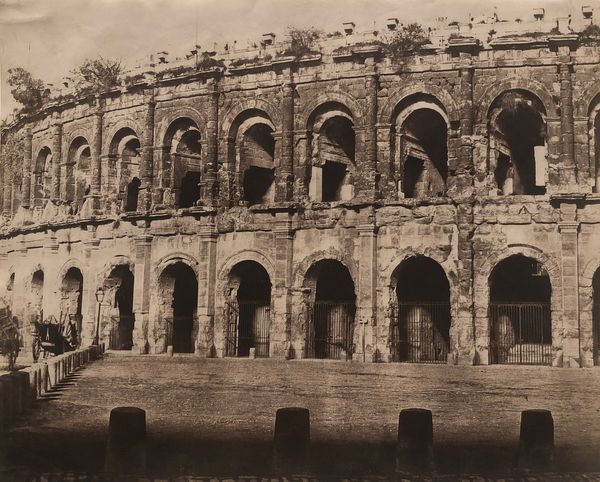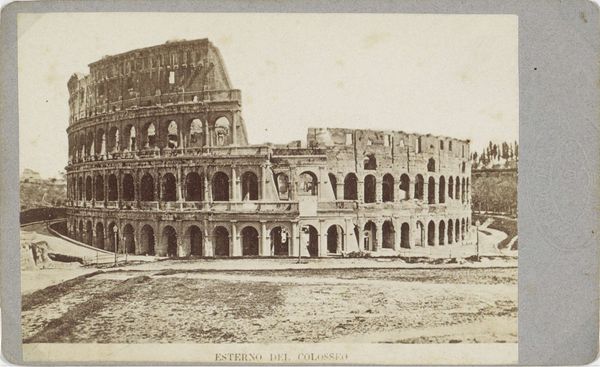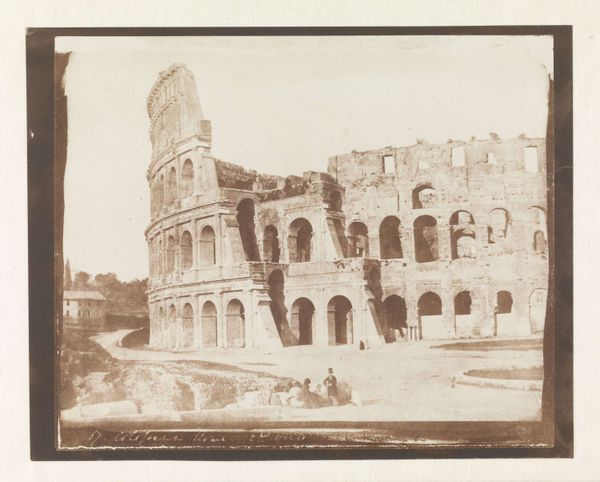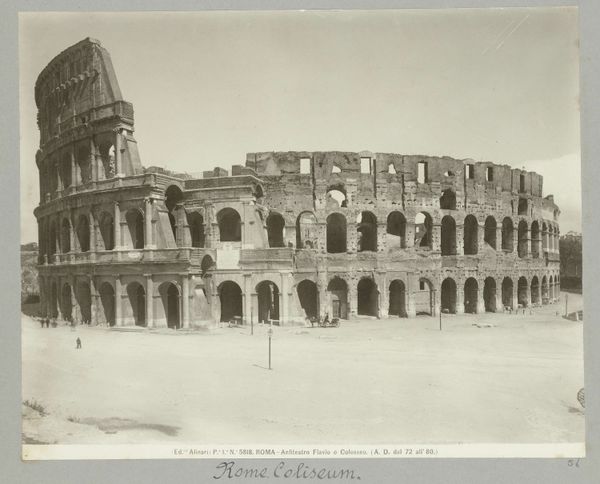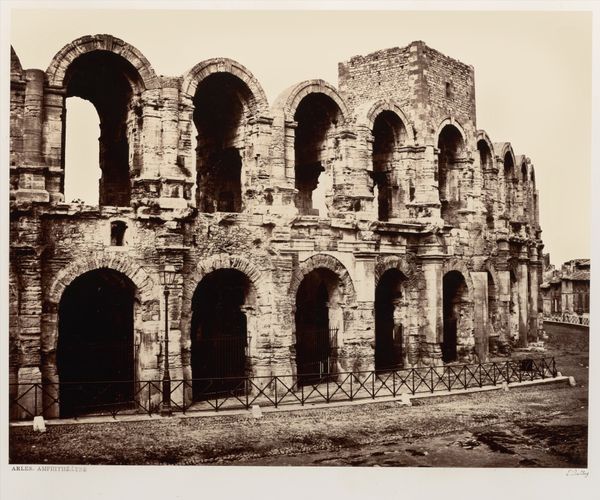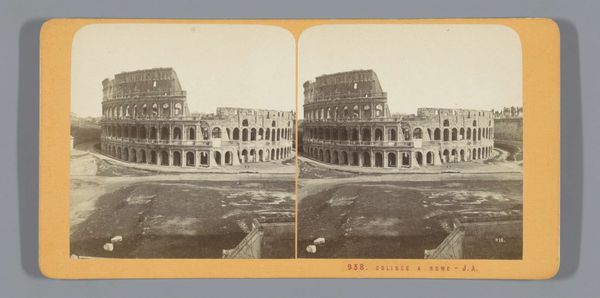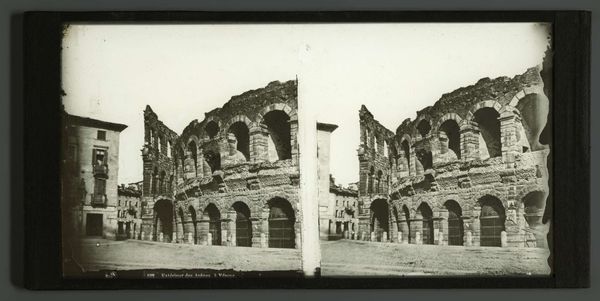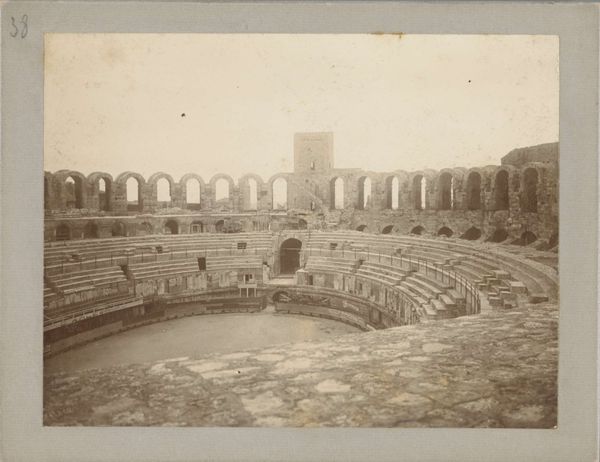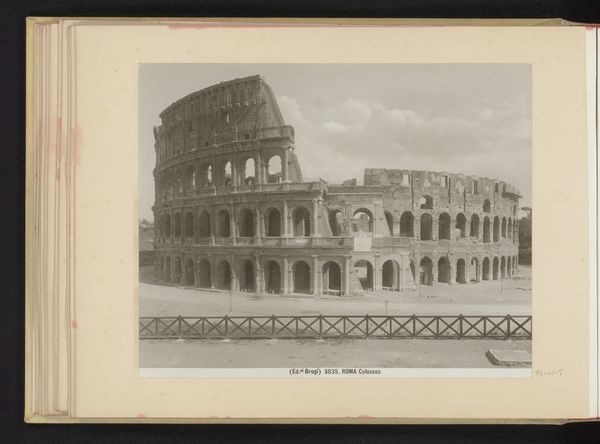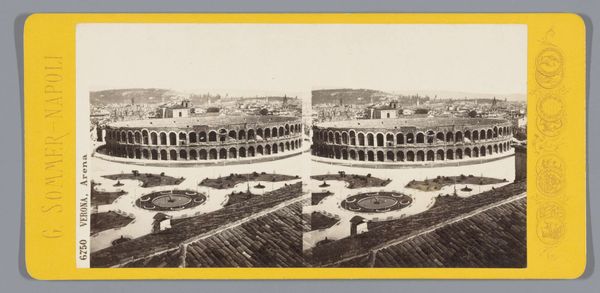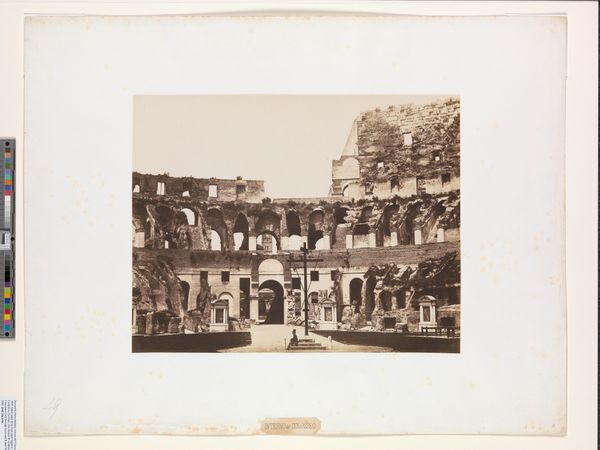
print, photography, gelatin-silver-print
greek-and-roman-art
landscape
photography
ancient-mediterranean
gelatin-silver-print
cityscape
Dimensions: height 85 mm, width 170 mm
Copyright: Rijks Museum: Open Domain
Editor: So this is "Exterior of the Arena of Nîmes" a photograph by Jean Andrieu, taken sometime between 1862 and 1876. It’s a gelatin silver print, which gives it a sort of faded, aged look that really emphasizes the ruinous state of the arena. What strikes me is how it seems to focus less on artistic beauty and more on documentation of a place and time, and I am very interested to know your thoughts about it. Curator: It's fascinating to consider the context of photography at this time. The gelatin silver print process itself – a product of industrial chemistry and mass production – allowed for the widespread dissemination of images like this. Think of it: the materiality of the photograph enables a new form of cultural consumption. What stories does it tell about labor and industrial advancement? Editor: That's a good point. I hadn’t thought about photography itself as a product of labor, outside of the artistic labor of taking the picture. Curator: Exactly! Consider the workers mining the silver, those producing the gelatin, the labor involved in the printing process. The 'documentation' you mentioned is intertwined with economic and industrial forces. Editor: That’s making me look at the image very differently. So, this photograph, seemingly a straightforward depiction of a historical site, actually represents complex systems of labor and production? Curator: Precisely. And, consider this, who was consuming these images and what was their social class and relationship to production? How might that be revealed in the ways that Andrieu documented and circulated his pictures? It shifts our understanding from simply viewing the Roman arena to considering how it's mediated by these 19th-century processes. Editor: I guess I'm just thinking how a photograph can be about the picture, but also the socio-economic conditions in which the picture was materialized. Thanks for pointing that out! Curator: Indeed, understanding art requires an ongoing inquiry into how meaning arises through materials and context. I am very excited to see how this lesson transforms how I observe materials beyond artistic oeuvres!
Comments
No comments
Be the first to comment and join the conversation on the ultimate creative platform.
